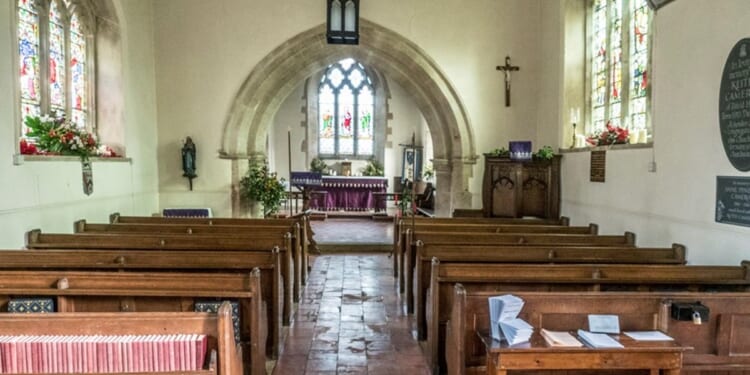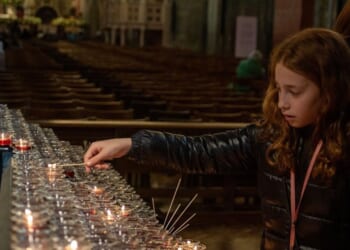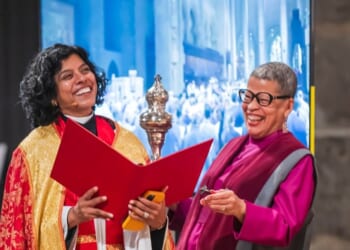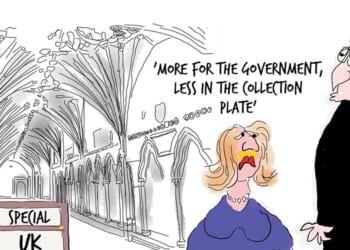A MEMORIAL plaque to a former churchwarden of St John the Baptist, Fifield cannot be installed on the north wall of the nave, after the Consistory Court of the diocese of Oxford refused to grant a faculty. The court ruled that the petition failed the exceptionality test that was required for installation in the Grade II* listed medieval church.
The petition for the faculty was presented by John William Palmer, whose wife, Tina Olivia Palmer, a much loved churchwarden and parishioner, died in May 2023. She had been involved in many parish projects, including a car-pool service for taking patients to hospitals, the church flowers service, organising the annual church fête, and organising the Mothers’ Union. She had also been a founding member of the Friends of the church and organised several fund-raising activities.
The DAC recommended Mr Palmer’s proposals, but did not comment on whether the exceptionality test had been met. The PCC was sympathetic towards the petition, but did not believe that the exceptionality test had been met.
The Diocesan Chancellor, the Worshipful David Hodge KC, pointed out that the case law relating to the introduction of memorial plaques in a church showed that a faculty for a memorial plaque would be granted only in an exceptional case.
One factor relevant to the consideration of exceptionality was that an association between the person commemorated and the church had to be established. Care had to be taken not to give the impression of privilege or superiority.
Another factor was that sufficient time should have elapsed after death to allow perspective to be put on the life, character, and service of the deceased, so as to enable careful and objective assessment.
The Chancellor said that the first factor pointed in favour of the petition, but the second “pointed the other way”, and “as a general rule a faculty authorising the installation of any commemorative plaque, or other memorial within a church [would] not normally be granted until at least five years had elapsed since the person’s death.”
The reason for that, the Chancellor explained, was to leave a reasonable period of time after the death to allow the family to grieve, and also to allow a more balanced assessment of the life and achievement of the deceased. Mrs Palmer had died only in May 2023.
Mr Palmer reported, however, that the family all felt that they had passed the emotional period of grieving and wished the application for a plaque to be processed.
The Chancellor acknowledged that the “five-year rule” was not inflexible, but Mr Palmer had put forward no objective ground as to the need to install the plaque imminently rather than after another three years. In the Chancellor’s judgment, little more than two years was insufficient time to allow any informed perspective to be applied to Mrs Palmer’s life, character, and service.
To establish “exceptionality”, it had also to be shown that Mrs Palmer’s service went substantially above and beyond that which was normally expected by the Church. It must be capable of withstanding the test of time, and be of meaning to future generations, not just to contemporaries of the person to be commemorated.
The Chancellor found that Mrs Palmer’s contribution, “although considerable and significant [had] not been sufficiently special or outstanding so as to go substantially above and beyond the faithful discipleship which the Church aspires to, and hopes for from all of its members.”
The Oxford diocesan guidance on the installation of commemorative plaques within churches states that the test of exceptionality does not apply where what is sought to be introduced into a church is not a memorial or plaque commemorating a person, but, rather, an artefact, such as a stained-glass window, which is intended to adorn and beautify the church and become part of its fabric, even though it might, in addition, incidentally commemorate a particular individual.

















